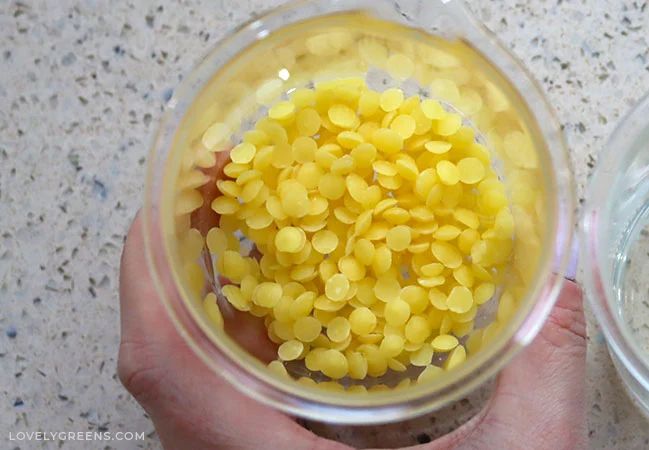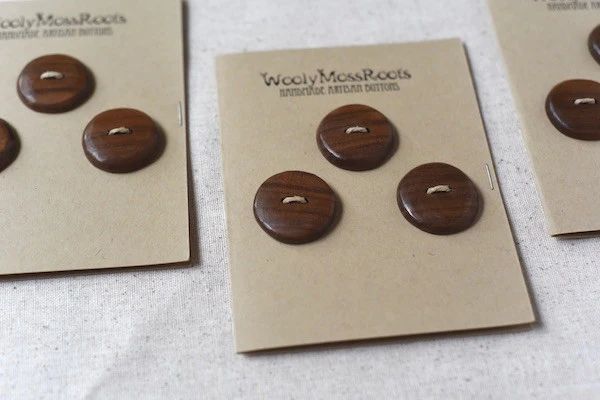Do Soy Wax Candles Melt?
What Are Soy Wax Candles?
Soy wax candles are candles made primarily from soybean oil instead of paraffin wax. While paraffin wax is a byproduct of petroleum refining, soy wax comes from renewable and sustainable soybean crops.
To make soy wax, soybean oil is hydrogenated to convert it into a solid wax. The resulting soy wax contains no GMOs and is biodegradable and non-toxic when unburned. It is often blended with other natural ingredients like essential oils and vegetable dyes to create soy candles.
Compared to paraffin wax candles, soy wax candles are praised for their natural ingredients, clean burn, and biodegradable nature. They have become a popular candle choice for many environmentally-conscious consumers.
Do Soy Wax Candles Melt?

Yes, soy wax candles do melt, but at a lower temperature than traditional paraffin wax candles. The melting point of soy wax is around 130-140 degrees Fahrenheit (54-60 degrees Celsius). This is considerably lower than the melting point of paraffin wax, which is 140-160 degrees Fahrenheit (60-71 degrees Celsius).
The lower melting temperature of soy wax means that soy candles burn cooler than standard paraffin candles. The wax pool of a soy candle will liquefy at a lower temp, while still providing an even and complete melt. This makes soy wax ideal for container candles, as the wax will readily adhere to the sides of glass and metal containers.
So in summary – yes, soy wax absolutely melts and performs well as a candle wax. Its lower melting point produces a cooler, safer burn compared to paraffin.
How Soy Wax Melting Compares to Paraffin
Soy wax and paraffin wax have some key differences when it comes to melting points and burn temperatures. Paraffin wax is derived from petroleum and melts at around 150-170 degrees Fahrenheit, according to Lone Star Candle Supply (https://lonestarcandlesupply.com/soy-vs-paraffin/). Soy wax, on the other hand, is made from soybeans and has a lower melting point that is generally between 115-135 degrees Fahrenheit.
The higher melting temperature of paraffin wax means that it will burn hotter and melt the wax pool faster than soy wax. As Lone Star Candle Supply explains, “As previously stated, soy wax is more dense than paraffin and typically requires more heat to burn it up.” The cooler burn of soy wax makes the wax pool last longer before being completely melted.
While paraffin melts quicker and burns hotter, some prefer soy wax because it is a renewable resource. Soy wax also has potential benefits over paraffin in terms of being cleaner burning. However, paraffin can be preferable in certain candlemaking situations where a hotter melt pool is desired.
Why Soy Wax Melts at a Lower Temperature
Natural soy wax has a lower melting point than many other candle waxes like paraffin. Paraffin wax, made from petroleum, melts at around 130-150°F. Soy wax, which comes from soybeans, melts at a lower temperature of 115-135°F depending on the blend. This lower melting point for soy wax is intrinsic to the natural soy wax itself and doesn’t require any extra additives to lower its melting temperature like paraffin sometimes does.
The reason that soy wax melts at a lower temperature comes down to its chemical composition. Soy wax is composed of hydrogenated soybean oil along with soy fatty acids and other natural soy components. The types of fatty acids present give soy wax a lower melting point than the long hydrocarbon chains that make up paraffin wax derived from petroleum.
Additionally, soy wax contains natural unsaturated fats that keep the melting point depressed compared to fully saturated paraffin compounds. The intrinsic chemical nature of plant-based soy wax gives it a lower melting temperature than petroleum-derived paraffin.
Factors That Impact Melting
There are a few key factors that impact how soy wax melts when burning a candle:
Wick size has a significant effect on melting. A wick that is too small for the diameter of the candle jar will not provide enough heat to melt the wax fully. The melt pool will be small and the candle may tunnel or leave wax around the edges unmelted. A wick that is too large can cause the candle to burn too hot and melt the wax too quickly. Properly sizing the wick is critical for getting good melt with soy wax.
Room temperature also plays a role. Soy wax becomes soft starting around 80-90°F. In a warmer environment, the wax will naturally be more pliable and the melt pool will spread more easily. In cooler temps, the wax will be firmer and resist melting. Burning the candle in a draft or cold room could limit how well the wax melts.
The shape and material of the candle vessel impacts melting too. Containers that are narrow or have a small diameter can limit melt pool spread. Materials like glass or metal will absorb less heat than porous containers, resulting in a smaller melt pool. A wider vessel and non-porous material allows the wax to liquefy more efficiently.
Benefits of Soy Wax’s Lower Melting Point
One of the main benefits of soy wax’s lower melting point compared to paraffin wax is that soy wax candles burn at a lower temperature. According to House of Two Trees, soy wax candles burn up to 50% slower than paraffin candles because of the lower melting point. (1) This means that soy candles don’t get as hot while burning, making them safer to have around kids, pets, and flammable materials.
The lower burning temperature and slower melting rate of soy wax also leads to candles having a longer burn time. As Pure Integrity Candles points out, “Soy wax has a lower melting point than paraffin wax and because of this, soy wax candles tend to burn slower and longer.” (2) You’ll get more hours of burn time out of soy candles compared to standard paraffin.
Finally, the lower temperature of soy wax while burning results in less soot and smoke production. The cooler burn helps minimize black smoky build up on jars and around the candle wick. This makes cleaning up soy wax candles much easier than with paraffin.
Downsides of Soy Wax Melting
While soy wax candles offer benefits, they also come with some potential downsides related to melting that are worth considering:
Soy wax typically creates a smaller melt pool than paraffin wax. The melt pool is the liquid wax that forms around the wick as the candle burns. Smaller melt pools mean less fragrance throw. To help compensate, some makers use multiple wicks in larger soy wax jars for larger wax pools and better scent dispersion. (https://joetiehome.com/blogs/news/the-pros-and-cons-of-soy-wax-candles-what-you-need-to-know)
Because soy wax melts at lower temperatures, it can become soft and lose its shape in warmer room temperatures. Paraffin retains its shape better regardless of ambient heat. So in hot summer weather, soy candles may melt faster than desired. Keeping them in an air conditioned space can help avoid this.
The natural properties of soy wax make it more susceptible to melting issues than synthetic paraffin blends. But being aware of proper soy candle making practices can help maximize performance. When buying soy candles, look for makers who understand how to work with soy wax’s unique melting behaviors.
Making Soy Candles That Melt Well
One of the most important factors in getting a soy wax candle to melt properly is picking the right wick size for your vessel. As CandleScience explains, “If the wick is too small it cannot efficiently burn off all of the fuel (wax+fragrance) and generate enough heat to form a good melt pool.”1 Going up one or two wick sizes can make a big difference in the melt pool.
It’s also crucial to allow soy wax candles to cure properly before lighting. BrambleBerry recommends letting soy wax cure for at least 1-2 weeks for the best results. This allows the wax to settle and helps ensure an even burn and melt pool when you light the candle.2
Finally, using wax blends is an option if you want to create a stronger melt pool with soy wax. Adding a small amount of paraffin or beeswax to the soy wax can help strengthen the melt pool. But too much additive may diminish the benefits of soy wax. Finding the right balance through testing is key.
Caring for Soy Candles
Proper care is important for getting the most out of your soy candles and ensuring they burn cleanly and evenly. Here are some tips for caring for soy candles:
Before lighting, use scissors or a wick trimmer to trim wicks to 1/4 inch. Long wicks can produce excess smoke and uneven burning. As this source recommends, trimming to 1/4 inch helps soy candles burn their best.
Avoid drafts when burning soy candles, as air currents can disrupt the melt pool. For best results, burn soy candles in an area free from vents, fans, open doors, or windows. Drafts make it harder for soy wax to melt evenly.
Allow the wax pool to re-solidify completely before relighting. Soy wax needs time to harden again so the candle can burn correctly. As experts suggest, wait until wax is firm to the touch before relighting.
By following these care tips, you can help your soy candles last longer and perform their best. Trimmed wicks, avoiding drafts, and allowing solidification between burns all contribute to great soy candle experiences.
The Bottom Line
Yes, soy wax candles do melt when lit. The melting point of soy wax is lower than that of paraffin wax, typically between 120-170°F. This lower melting temperature provides some advantages but also some disadvantages compared to paraffin candles.
On the plus side, soy wax’s lower melting point means the wax pools and releases fragrance more quickly once the candle is lit. The wax also solidifies faster once the flame is extinguished. Additionally, soy wax is made from a renewable resource and produces less soot when burned compared to paraffin.
However, soy wax’s lower melting point also means candles may not retain their shape as well and are more prone to frosting in cold temperatures. The wax can also get too hot and mushroom over the container if the flame gets too large. Properly caring for soy candles by trimming wicks and avoiding drafts can help prevent some of these potential downsides.
Overall, soy wax candles provide an eco-friendly, clean-burning alternative to paraffin with some advantages and tradeoffs due to their lower melting temperature. With proper maintenance, soy wax can be an excellent choice for candle making and home use.




